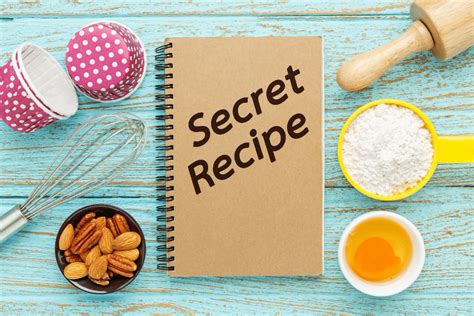A Secret Recipe Can Be Considered Intellectual Property
Protecting your culinary creations is just as important as protecting any other form of creative work. While you might not think of a secret family recipe as intellectual property (IP), it absolutely can be, and understanding this can help safeguard your culinary legacy and potentially even generate revenue. This article will explore how a secret recipe qualifies as intellectual property and the different ways you can protect it.
What is Intellectual Property?
Intellectual property refers to creations of the mind, such as inventions; literary and artistic works; designs; and symbols, names, and images used in commerce. This encompasses a wide range of things, including patents, copyrights, trademarks, and trade secrets. A secret recipe falls under the umbrella of trade secrets.
Secret Recipes as Trade Secrets
A trade secret is information that companies and individuals keep secret to give them an advantage over their competitors. To qualify as a trade secret, the information must meet several criteria:
- Secrecy: The information must not be generally known or readily ascertainable through legitimate means. This means actively keeping it confidential.
- Economic Value: The information must have economic value because it's secret. A widely known recipe wouldn't qualify.
- Reasonable Efforts to Maintain Secrecy: You must take reasonable steps to protect the secret, such as using non-disclosure agreements (NDAs), secure storage, and limited access to the recipe.
How to Protect Your Secret Recipe
Protecting your secret recipe involves a multi-pronged approach:
1. Non-Disclosure Agreements (NDAs)
NDAs are legally binding contracts that require individuals who have access to your secret recipe to keep it confidential. This is crucial for employees, business partners, and anyone else who might handle the recipe. It's vital to consult with a legal professional to ensure your NDA is comprehensive and enforceable.
2. Limited Access and Secure Storage
Restrict access to your recipe to only those who absolutely need it. Use secure storage methods, both physical (locked cabinets, safes) and digital (password-protected files, cloud storage with strong encryption).
3. Employee Training and Policies
If you employ others in your business, train them on the importance of protecting the recipe and implement company policies that reinforce confidentiality.
4. Watermarking and Copyrighting (for written versions)
While the recipe itself might not be copyrightable in its entirety, any written documentation, such as instructions, photographs, or even the narrative surrounding the recipe, can be copyrighted. Adding watermarks to digital versions can deter unauthorized copying.
5. Consider Branding and Trademarks
While the recipe itself is a trade secret, the name of your dish or the branding associated with it can be trademarked, providing further legal protection.
What Happens if Someone Steals Your Secret Recipe?
If someone steals and uses your secret recipe, you can pursue legal action. Proving the theft and the economic damage caused is crucial. This is why maintaining meticulous records of your efforts to protect the recipe is so important. Consulting with an intellectual property lawyer is essential in these situations.
Conclusion: Safeguarding Your Culinary Heritage
Your secret family recipe is more than just a collection of ingredients; it’s a piece of your heritage and potentially a valuable asset. By understanding the principles of intellectual property and taking proactive steps to protect your recipe, you can safeguard your culinary legacy and ensure that its unique flavors remain yours for generations to come. Remember, proactive protection is key to preventing future issues and maximizing the potential value of your unique recipe.

